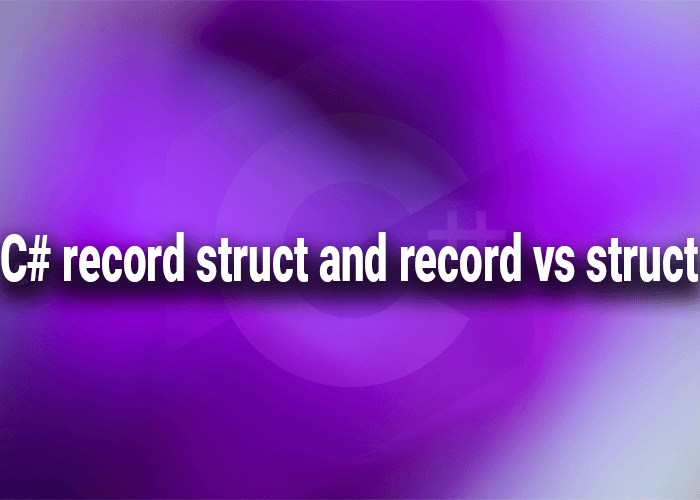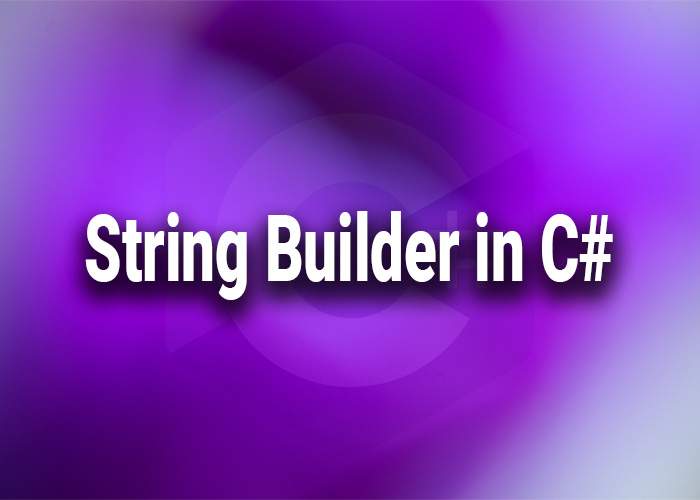Understanding Record Structs and Comparing Records with Structs in C#
Introduced in C# 10 as part of the .NET 6 update, record structs combine the benefits of records with the value semantics of structs. This addition offers a new way to define value types that are immutable and benefit from value-based equality, similar to record classes. This article explores what record structs are, how they compare to traditional structs, and when to use each.
What are Record Structs?
Record structs extend the concept of records to structs, providing a concise syntax for defining immutable value types with built-in value-based equality and other record functionalities. Like record classes, record structs are intended to be simple, immutable types that make data handling safer and more predictable.
Key Features of Record Structs:
- Immutability: Record structs are immutable by default if declared with the readonly modifier.
- Value-Based Equality: Automatically implements value-based equality, unlike traditional structs which require manual implementation.
- With-Expressions: Supports non-destructive mutation using with-expressions.
Syntax of Record Structs
Record structs can be declared using either positional records syntax or nominal syntax.
Positional Record Struct
public record struct Point(double X, double Y);
Nominal Record Struct
public record struct Point
{
public double X { get; init; }
public double Y { get; init; }
}
In both examples, Point is a record struct that supports being instantiated with immutable properties, which are compared by value.
Comparing Record Structs with Traditional Structs
While record structs offer many of the conveniences of records, traditional structs are still useful and have their place in C# programming. Here’s how they compare:
Mutability
- Record Structs: Typically immutable if designed correctly, which simplifies development by reducing side effects.
- Traditional Structs: Can be either mutable or immutable, depending on how they are implemented.
Equality Comparison
- Record Structs: Provide built-in value-based equality, meaning two instances are considered equal if their properties have the same values.
- Traditional Structs: Use default reference equality; custom equality logic must be manually implemented if value-based comparison is needed.
Performance
- Record Structs: Slightly less performant than traditional structs due to additional features like built-in equality checks.
- Traditional Structs: Generally offer better performance, especially for simple data structures, due to their straightforward memory layout and lack of overhead.
Use Case Scenarios
- Record Structs: Best used when you need value types with built-in value comparison and immutability, ideal for functional programming or when passing data through layers that should not be altered.
- Traditional Structs: Suitable for high-performance scenarios where control over memory layout and performance is critical, and for representing simple, small data structures.
Example: Using Record Struct
Consider a scenario where you need to represent a 2D point in a graphical application:
var point1 = new Point(3.0, 4.0);
var point2 = new Point(3.0, 4.0);
Console.WriteLine(point1 == point2); // Outputs: True
Here, point1 and point2 are record structs and are considered equal based on their values, not their memory addresses.
Conclusion
Record structs in C# provide a robust way to define value types that need to be immutable and equated based on their values rather than their references. They bridge the gap between the immutability and ease of use offered by record classes and the efficiency and value semantics of traditional structs. By understanding the distinctions and appropriate use cases for each, developers can better design their applications for safety, performance, and clarity.





